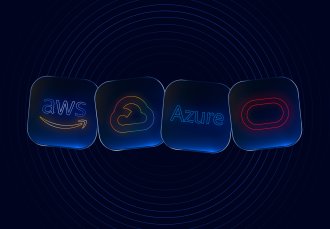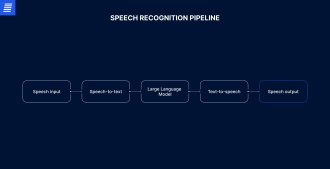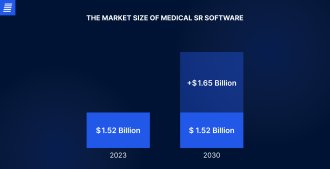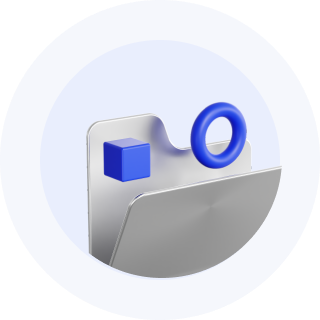
Contact us
Our team would love to hear from you.

This article explores the use of medical voice recognition software, including its types, top benefits, and common challenges, along with their solutions.
The answer to this question is simple. Most people speak faster than they can type. An experienced operator can type a 100-word message in about 2 minutes. A speech recognition system is able to transcribe 150 words per minute and has already achieved 98% accuracy under optimal conditions, which is critical for healthcare providers. In addition, speech recognition software is being constantly improved, which results in spending less time per patient admitted. With speech recognition systems hospitals trim their costs because doctors can enter data directly into an electronic health record (EHR) system without having a nurse or an assistant to carry out this task.
SR relies on a combination of advanced technologies and algorithms powered by artificial intelligence (AI) and machine learning (ML). At its core, deep neural networks (DNNs) and recurrent neural networks (RNNs) learn how speech sounds and what it means. Language models handle grammar and syntax tasks, while natural language processing (NLP) analyzes and extracts meaning from human language to perceive context. Speech-to-text (STT) engines powered by multiple technologies, like signal processing and deep learning, convert spoken language into written text.
Combined with agentic AI, speech inputs can enable physicians to access different intelligent capabilities—such as retrieving clinical information, documenting notes, and supporting decisions—and receive timely, context-aware responses from the AI agent.


An AI-powered SR process begins with voice input—a speaker’s voice is recorded and converted into text using STT models like Amazon Transcribe and Azure AI Speech. Large language models (LLMs) then interpret the text, orchestrate task execution, and generate response. Text-to-speech (TTS) models like Amazon Polly convert the LLM-based response into synthetic speech.
A lot of healthcare institutions have a position of a transcriptionist or outsource transcription services in order to make records of everything a doctor says to patients. Nevertheless, outsourcing or hiring a transcriptionist and providing enough specialists to cover the needs of a medical facility is a real challenge.
With applications for voice recognition, doctors do not need to transcribe audio dictation, and medical facilities do not have to hire a lot of medical transcriptionists to accompany every doctor. The text recognized by a SR system goes directly to the EHRs. There is no need to worry about difficult medical terminology—medical SR systems are trained to recognize the majority of terms.


Here are some of the prominent use cases of SR in healthcare:
Assisting physicians
One key use of medical voice recognition software is supporting medical staff in various tasks. Using these tools, physicians can document clinical notes, navigate through EHRs, communicate with medical teams, and more. When implementing voice recognition tools to support medical personnel, it’s essential to ensure compatibility with existing EHR systems, strong security, HIPAA compliance, and accessibility across different devices.
Clinical trials
Medical voice recognition systems improve the flow of clinical trials. Combined with LLMs, SR technology can capture and analyze interactions between patients and physicians during trials. LLMs allow the system to understand context, summarize interactions, and extract value, providing recommendations and supporting decision-making.
Sentiment analysis
SR is invaluable in sentiment analysis, i.e., monitoring a speaker’s emotional tone. By analyzing pitch, tone, speech rate, and other voice characteristics, this technology assists healthcare professionals in detecting patterns in patients’ speech that may indicate certain mental health conditions, like depression or anxiety.
Back-end. These systems convert speech into text only after the speaker has dictated it. The system records the file, processes it and then converts the voice into a text document. Afterwards, the document is ready for editing or direct use.
Front-end. Unlike back-end SR systems, front-end ones are capable of recognizing and converting voice to text in real time. The system can make some mistakes in recognition, so a medical professional has to edit the text, in other words, ‘teach’ the system to work with their speech patterns.
Speaker-dependent. Such software learns the unique characteristics of a person’s voice. For correct operation, the system should be trained by any new user via talking to it. This often means that new users should read several pages of text so that a speech recognition system could analyze the peculiarities of the voice and intonation.
Speaker-independent. Such systems recognize any user’s voice, so no training is required. The main drawback of speaker-independent software is lower accuracy as compared to speaker-dependent solutions. To deal with the issue, the system uses limited grammar and small vocabulary.
Control interface. SR systems with the control interface functionality make it possible to interact with software via various voice commands. In healthcare, such systems, for instance, allow entering data into various fields of an EMR solution, aid in performing order and inventory management, and help to carry out other tasks.
Time savings and financial benefits. SR software eliminates the need for transcription, saving up to $ 30,000 annually per physician. By implementing EHR with trained voice recognition, healthcare providers typically reduce documentation time by up to 56%, saving time for more patient-oriented tasks.
Improved accuracy. Real-time verification allows healthcare providers to review and correct notes, thereby training the system and reducing transcription errors. Integrating advanced AI also helps improve documentation accuracy.
Flexibility. Most SR systems used in healthcare allow users to add new words to the dictionary and thus adapt the system to work in a particular medical department.
Improved quality of care. With the help of the speech recognition technology in healthcare, the doctor can be truly present with the patient without having to interrupt the conversation flow to make some notes. As a result, the doctor is more connected and provides more qualitative care.
While medical voice recognition software can significantly enhance productivity, addressing potential challenges is essential to ensure optimal performance.
Accuracy and reliability
Medical voice recognition systems often struggle with complex medical terminology, jargon, and background noise, which can affect accuracy. Best practices to improve precision include:
Language and accent coverage
Understanding different dialects and accents is another major challenge for SR systems. While abundant labeled data exist for widely spoken languages like English, many global languages lack high-quality training data. To ensure optimal model performance, it’s essential to address the combined factors of language, accent, and domain-specific vocabulary. Recommended strategies include:
System integration
Many healthcare organizations face challenges integrating medical voice recognition software into their existing systems, such as EHRs. This is mostly due to compatibility issues, infrastructure requirements, the training curve of voice recognition engines, and the learning curve of medical personnel. To streamline integration, consider the following approach:
Data privacy and security
Protecting sensitive patient data is a major challenge when implementing SR software. The storing and handling of protected health information (PHI) requires stringent oversight to avoid violating legal regulations and standards, such as HIPAA. The following measures help healthcare organizations protect their data.

EffectiveSoft created a system that enables connectivity of optical-scanning diagnostic devices, along with secure data storage, analysis, and backup.
Experienced IT vendors go beyond merely executing tasks—they understand the unique demands and pain points of healthcare businesses. Here’s why partnering with software development specialists makes a difference:
Domain expertise
Due to specialized terminology and clinical jargon used in healthcare, the vocabulary that powers medical voice recognition systems requires careful and targeted training. IT professionals with expertise in developing healthcare software solutions understand the nuances of the industry and its unique language. Their combined knowledge of technology and healthcare enables them to select the right tools and strategies to ensure your project’s success.
Regulatory compliance
Healthcare software must adhere to various regulations, such as HIPAA in the U.S. and GDPR in Europe. Choosing a reliable development partner guarantees that your medical voice recognition solution complies with all the required legal standards while keeping patient data secure and private.
Workflow integration
Skilled healthcare software developers ensure that medical voice recognition software fits naturally into the established processes. From deep workflow analysis to user adoption, engineers tailor the solution to your requirements, focusing on system speed, reliability, and security.
It has been traditionally believed that in hospitals speech recognition systems can be used only by doctors who dictate reports to a computer. Apparently, modern SR systems can provide significant assistance to any employee in a healthcare institution. Such solutions reduce the time spent on compiling and transcribing medical records, speed up the flow of information, as well as help healthcare staff handle additional workload.
As an advanced medical application development services provider, EffectiveSoft is ready to reveal the potential of voice recognition in healthcare. Contact us to get a quote.

Medical voice recognition software is a technology that converts spoken language into text in healthcare settings. It allows healthcare professionals to dictate patient information, medical notes, and other documentation verbally, making documentation faster and more accurate.
Medical transcription involves human transcribers listening to recorded dictations and converting them into text. Voice recognition, on the other hand, uses software to automatically convert spoken language into text without human intervention. While transcription can be more accurate but time-consuming, voice recognition is faster but may require post-processing for accuracy.
Voice recognition technologies use Automatic Speech Recognition (ASR) systems. These systems utilize complex algorithms, neural networks, and deep learning techniques, including Recurrent Neural Networks (RNNs) and Convolutional Neural Networks (CNNs).
The development cost depends on various aspects—the scope and complexity of the solution, features, customization level, integration needs, and more. Contact our specialists to get a cost estimate and launch your medical voice recognition project.
Can’t find the answer you are looking for?
Contact us and we will get in touch with you shortly.
Our team would love to hear from you.
Fill out the form, and we’ve got you covered.
What happens next?
San Diego, California
4445 Eastgate Mall, Suite 200
92121, 1-800-288-9659
San Francisco, California
50 California St #1500
94111, 1-800-288-9659
Pittsburgh, Pennsylvania
One Oxford Centre, 500 Grant St Suite 2900
15219, 1-800-288-9659
Durham, North Carolina
RTP Meridian, 2530 Meridian Pkwy Suite 300
27713, 1-800-288-9659
San Jose, Costa Rica
C. 118B, Trejos Montealegre
10203, 1-800-288-9659